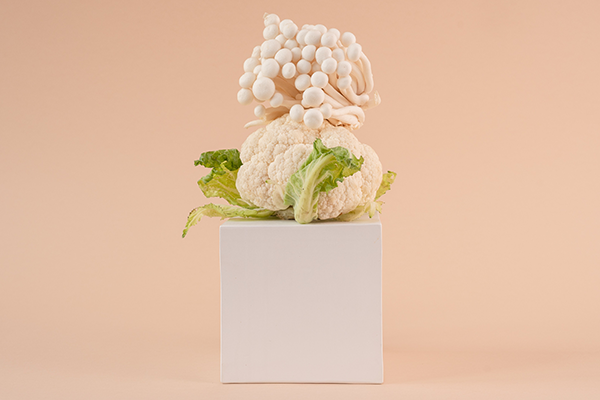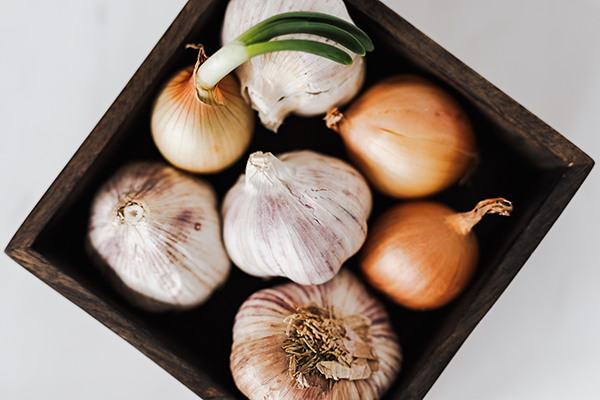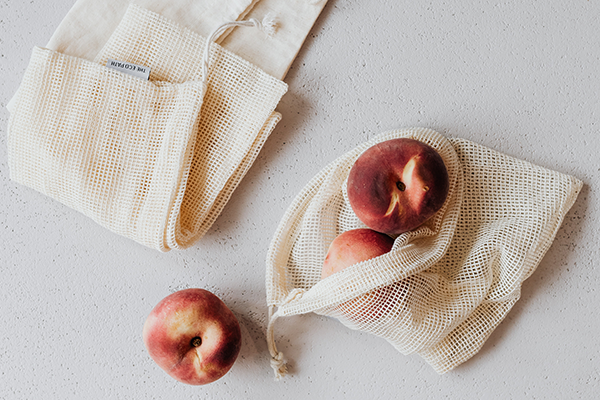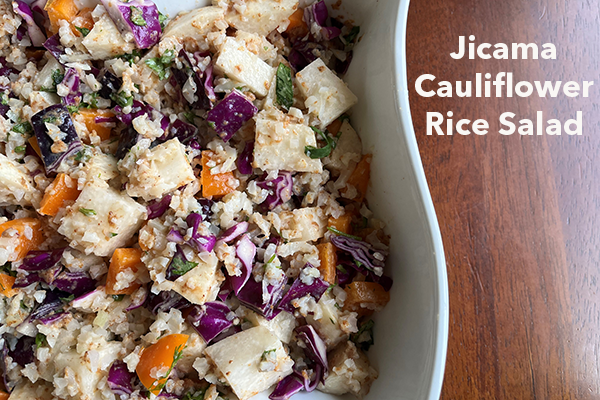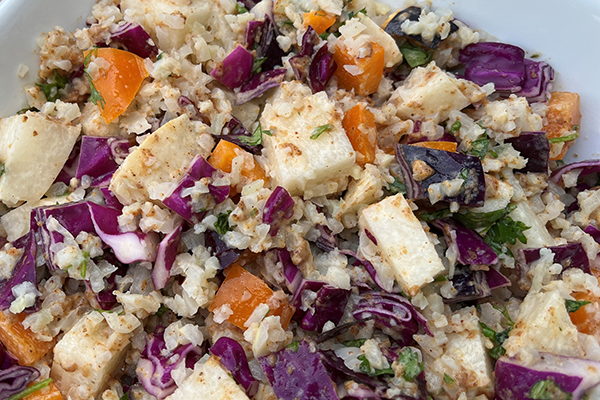We’re taught the rainbow has 7 primary colors - red, orange, yellow, green, blue, indigo and violet - and in this occasional series, we’ve discussed the unique set of nutrients and health benefits each of these colors provide. But what about the other colors that exist in nature?
If you look close enough at a rainbow, you’ll notice there are more colors beyond ROY G. BIV. You can spot these additional colors where color bands collide (like turquoise between blue and green). However, if the color bands aren’t next to each other in the rainbow, you won’t be able to see them mix. For example, brown is a color you can’t see because it is created by blending red and green – non-consecutive color bands. White is another color you’ll never see in a rainbow since it’s formed when all colors are combined.
Now that you’ve had a little science lesson, let’s get back to nutrition! While you’ll never see tan or white in a rainbow, they are loaded with powerful phytonutrients and shouldn’t be overlooked when trying to add more color to your plate. So, let’s tap into tan and white and see what these colors have to offer us.
When adding more color to your plates, don't forget about the subtle shades of tan and white - they are loaded with disease-fighting, health-boosting nutrients. #eattherainbow #saslife Click To TweetFearless Flavonoids
Tan and white fruits and vegetables may lack vibrant hues, but that doesn’t mean they have lackluster health benefits. They contain flavones, flavonols and other compounds that have powerful antioxidant, antimicrobial and immune boosting properties.
Here’s a small sample of just how powerful these foods can be:
- Regularly eating mushrooms has been associated with a lower risk of cancer, all-cause mortality and more medicinal magic.
- Eating at least 100g (about ¾ cup) of Jerusalem artichoke has been shown to decrease postprandial glucose levels.
- Cauliflower, fennel and garlic are excellent sources of kaempferol, a flavonoid with strong cancer-protective properties.
Subtle Shades
Tan provides a sense of earthly stability, warmth and security. This reassuring color is calming and relaxing and is often used in fashion and interior design to create a casual, relaxed feel.
The color white contains an equal amount of all the colors, making it impartial, independent and neutral. White represents cleanliness and purity and allows the mind to be open and free, creating space for new thoughts and beginnings – a clean slate.
Peruse the list below to tackle tan and white, trying some new ones that aren’t typically in your rotation. (Hint: While most of these are delicious eaten raw, click on the table for links to some recipe inspiration.)
As always, remember that our bodies thrive on variety! Use this Eat the Rainbow Checklist as you continue to paint your plate with colorful fruits and vegetables.
Jicama Cauliflower Rice Salad
Recipe adapted from Paleo Hacks
Makes 4-6 servings
PRINT RECIPE
Ingredients
For the Salad
10oz bag riced cauliflower, thawed if frozen or fresh
1 cup shredded purple cabbage
½ small jicama (about ½ lb), diced
1 bell pepper, diced
¼ cup chopped cilantro
For the Dressing
⅓ cup unsweetened canned coconut milk
2 Tbsp almond butter
2 Tbsp lime juice
1 tsp honey
½ tsp ground ginger
salt, to taste
Directions
- Combine salad ingredients in a medium-sized bowl.
- In a small bowl, whisk together dressing ingredients until smooth.
- Drizzle sauce over salad and toss to combine.
